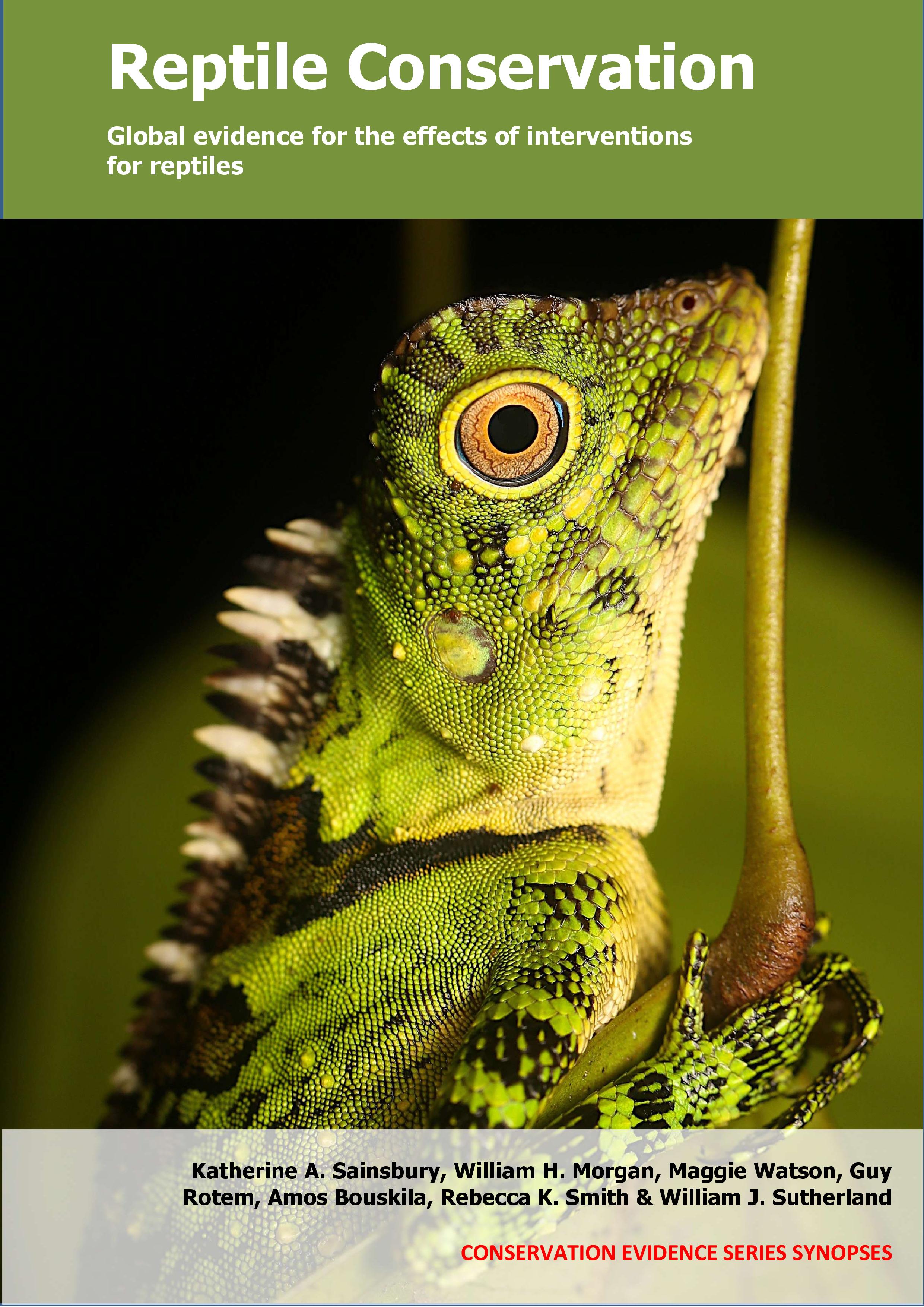Breed reptiles in captivity: Crocodilians
-
Overall effectiveness category Awaiting assessment
-
Number of studies: 6
View assessment score
Hide assessment score
How is the evidence assessed?
-
Effectiveness
not assessed -
Certainty
not assessed -
Harms
not assessed
Study locations
Supporting evidence from individual studies
A study in 1966–1979 in Ohio, USA (Jardine 1981) reported that Schneider's smooth-fronted caimans Paleosuchus trigonatus bred successfully in captivity after 13 years. In 1979, a female produced a clutch of 17 eggs, six of which hatched successfully after 115–118 days of incubation. One hatchling died after two weeks, and the other five survived at least three months. In 1975, a clutch was laid but the eggs rolled into the water and were broken. In 1966–1967, a juvenile pair of caimans were acquired and housed together in a circular pool with a concrete island along with several other crocodilians. After the clutch was lost in 1975, the pair were moved to a new enclosure with dense vegetation and a pool of water. Water temperatures ranged from 21–27°C and air temperatures were 21°C in winter and followed ambient temperatures in summer. Eggs were moved to a Styrofoam container, covered with peat moss and incubated at 29–31°C and 92–100% humidity. After 112 days of incubation, eggs were uncovered, moved gently and a grunting call was made to simulate actions by an adult.
Study and other actions testedA study in 1987–1989 in Barinas state, Venezuela (Ramo et al. 1992) reported that one of two female Orinoco crocodiles Crocodylus intermedius bred successfully in captivity. In 1987–1988, two females produced four clutches of 37–49 eggs each. Hatching success of eggs from one female was 72%, but no eggs produced by the other female hatched. Incubation periods were 78–85 days. In 1989, a further clutch of 52 eggs was laid, but no data on hatching success was available. Yearly survival of hatchlings was 4–50%. In 1987, one male and two female crocodiles were acquired and housed in an outdoor facility with two ponds (20 x 10 x 1 m and 10 x 4 x 1 m) and two sand beaches for egg laying. Nests were incubated under natural conditions.
Study and other actions testedA study in 1996 in a captive facility in São Paulo, Brazil (Verdade & Sarkis 1998) reported that second-generation captive-bred broad-snouted caiman Caiman latirostris bred successfully in captivity. Four female broad-snouted caiman first laid a single clutch each at approximately 10 years old (36–44 eggs/clutch). Hatching success was 40–86% per clutch (81 of 121 eggs hatched). Three hatchlings died within the first week of emerging. Four female and one male broad-snouted caiman were born in captivity in 1986, and maintained in enclosed pens (see original paper for details). Eggs were artificially incubated (see original paper for details).
Study and other actions testedA review of studies investigating the genetics of captive breeding programmes (Witzenberger & Hochkirch 2011) found that captive breeding reptiles had mixed genetic outcomes in comparison to wild populations. Nine percent of 131 studies related to reptiles. One study on American alligators Alligator mississippiensis found that captive breeding had a positive effect on two measures of genetic diversity (measured as expected heterozygosity and number of alleles), but a negative effect on the chance of inbreeding compared to wild populations. Two databases (Web of Science and Zoological Record) were searched for studies investigated the genetics of captive populations up until 2010.
Study and other actions testedA study in 2012–2015 at the Smithsonian’s National Zoological Park, Washington DC, USA (Augustine 2016) found that Cuban crocodiles Crocodylus rhombifer bred in captivity, but hatching success of eggs was low. Twenty-six eggs were produced in 2012 and 24 in 2015. A total of three eggs hatched successfully and a further four produced hatchlings after eggs were opened manually or hatchlings were assisted during emergence. All eggs came from a single breeding pair of adult crocodiles, and 10 from each clutch that showed signs of development were incubated (eight in a 1:1 mixture of vermiculite and water, and two in suspended incubation containers). Eggs in suspended incubation containers were suspended over saturated vermiculite or a saturated sponge and standing water. Incubation containers were vented throughout the process and water was added to the vermiculite weekly.
Study and other actions testedOne study in 1982–1985 and 2006–2016 in a captive facility in Xuancheng, Anhui Province, China (Manolis et al. 2016) reported that a captive population of Chinese alligators Alligator sinensis increased over a 10-year period. The captive population grew from 10,000 individuals in 2006 to 15,000 in 2016. In 1982–1985, wild alligators (212 individuals) and nests (778 eggs) were brought in to captivity as part of a breeding programme.
Study and other actions tested
Where has this evidence come from?
List of journals searched by synopsis
All the journals searched for all synopses
This Action forms part of the Action Synopsis:
Reptile Conservation
Reptile Conservation - Published 2021
Reptile synopsis





)_2023.JPG)














